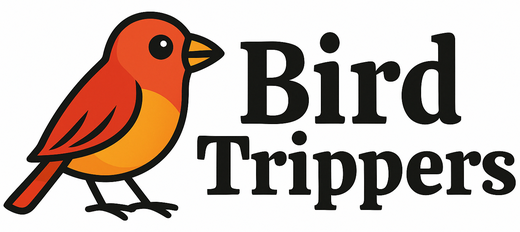Do All Birds Have Tails: Long, Short, or No Tail At All
Ever wondered about the crucial role a bird’s tail plays? From steering mid-air to captivating courtship displays, the tail is vital for survival and communication. Discover how tail shapes vary dramatically, like the swift’s forked tail for agility and the peacock’s extravagant plumage for attracting mates. Even birds like emus and ostriches, seemingly tailless, possess a hidden structure. Explore the fascinating world of avian tails and their impact on flight, communication, and evolution. Dive in to learn more!
Important information

- A bird’s tail is crucial for flight, providing balance, steering, and braking. It contributes up to 30% of lift.
- Tails are important for communication, particularly in courtship displays, like the peacock’s extravagant plumage.
- Tail length varies greatly among species, reflecting adaptations to different lifestyles and habitats. Short tails aid maneuverability, while long tails enhance balance.
- Even flightless birds like ostriches and emus possess a tail structure, although it is greatly reduced.
- Tail length dimorphism, where males and females have different tail lengths, often results from sexual selection, but presents a trade-off between attracting mates and avoiding predators.
Do All Birds Have Tails?
A bird’s tail is vital, providing balance and steering during flight. It even enables communication. While emus and ostriches have noticeably short tails, they still possess the underlying anatomical structure common to all birds.
Common Anatomical Feature Among Birds
A bird’s tail is crucial for its survival. This essential body part helps them balance, steer while flying, and even communicate with each other. Interestingly, tail shapes and sizes vary widely across different bird species.
Species Without Tails: Emus and Ostriches
Emus and ostriches appear tailless because of their small tail structures. This is related to their inability to fly, although they still have a tail, it is just not very noticeable.
The Role of Tails in Avian Anatomy
A bird’s tail plays a crucial role in maintaining balance and executing mid-air maneuvers. It provides stability, especially during landing or perching. Besides its function in flight, the tail also serves as a communication tool, conveying messages such as courtship displays. The tail’s structure significantly impacts aerodynamics, influencing lift and drag for efficient flight. Tail shapes exhibit remarkable diversity, reflecting adaptations to various flight styles and habitats.
Tail Structure and Function
A bird’s tail plays a crucial role beyond flight. It provides stability and control in the air, acting as a rudder for steering, a brake for slowing, and a balancer for maintaining equilibrium. The tail is also a key communication tool, particularly in courtship displays.
Tail’s functions in flight
- stability and control,
- steering,
- slowing,
- balancing.
Communication
The tail is a key communication tool, especially in courtship displays.
The diverse shapes and sizes of tails reflect unique adaptations. A swift’s forked tail allows for agile aerial navigation. A peacock’s extravagant plumage serves to attract mates. Each tail design serves a distinct purpose, reflecting the bird’s lifestyle and environment.
Balance and Directional Assistance
A bird’s tail has several crucial functions. It provides balance during flight and while perching. The tail also acts as a rudder, allowing the bird to quickly change direction and steer effectively.
Tail Shapes and Phenotypic Variation
Bird tails come in a striking variety of shapes, each serving a specific purpose. From the forked tail of a barn swallow to the rounded tail of a robin and the extravagant plumage of a peacock, these diverse forms reveal the crucial roles tails play in avian life. Even the unassuming sparrow’s short tail has a vital function. These adaptations reflect the unique lifestyles and habitats of each species, impacting flight, foraging, and mating rituals.
Impact on Flight
A long tail, like a peacock’s, enhances balance during flight. A shorter tail, like a sparrow’s, aids maneuverability in dense vegetation.
Role in Mating
Tail shape plays a vital role in attracting mates, contributing to the continuation of each species.
Functions of Bird Tails
Bird tails serve multiple crucial functions, primarily in flight and communication. In flight, the tail acts as both a rudder and a brake, providing lift and essential stability. Tail feathers help birds steer, control their descent, and even brake mid-air. Beyond flight, tails play a significant role in communication. Tail movements are essential for courtship displays, signaling within the flock, attracting mates, conveying aggression, and warning of danger.
Aerodynamic Enhancement
A long tail is essential for efficient flight, minimizing drag and increasing maneuverability. This is particularly advantageous for aerial insectivores and birds of prey, which require agility for hunting. A longer tail enables sharper turns, crucial for pursuing prey. Furthermore, research connects tail length to foraging strategies and habitat.
Lift and Stability During Flight
A bird’s tail plays a vital role in flight, generating up to 30% of its lift thanks to the added surface area. Beyond lift, the tail provides crucial stability by managing airflow, keeping the bird balanced and steady while airborne.
Courtship and Nonverbal Communication
Peacocks use their magnificent tails for nonverbal communication, especially during courtship. The tail feathers essentially advertise the peacock’s health and suitability as a partner, attracting peahens by signaling fitness and desirability to potential mates.
Birds Surviving Without Tails
Birds have adapted to survive without prominent tails. Larger wings enhance both lift and maneuverability, leading to altered flight styles. Some birds compensate with rapid flapping, while others rely more on gliding.
Ostriches and certain penguins exemplify this, possessing rudimentary tail structures hidden beneath their feathers. These evolutionary adaptations are essential for their survival.
Adaptations and Survival Mechanisms
Tailless birds exhibit remarkable adaptability, adjusting their balance, steering, wing usage, and posture to compensate for the lack of a tail. Studies show they often develop innovative flight methods, such as modifying wing shape or employing unique flight patterns. These effective adaptations enable them to thrive, demonstrating that a tail, while generally crucial for flight, is not essential for survival. This resilience highlights their remarkable ability to overcome physical limitations.
Long vs. Short Tails: Ecological and Evolutionary Perspectives
In the animal kingdom, males and females often display different appearances, a phenomenon called sexual dimorphism. A prime example of this is tail length.
The peacock’s extravagant tail, while attracting mates, hinders its agility. This shows how tail length influences mating success.
Conversely, a female sparrow’s shorter tail enhances maneuverability and predator evasion. This demonstrates how tail length affects survival.
Evolution shapes these differences, adapting them to specific environments. Research confirms that the impact of tail length on both mating and survival can be substantial.
Sexual Selection and Dimorphism
In many animal species, males and females exhibit differing tail lengths, a characteristic known as tail length dimorphism. This difference often arises from sexual selection, where females may favor males with longer tails. These longer tails can indicate genetic fitness, robust health, or superior foraging abilities. This preference drives the evolution of increasingly elaborate tails in males. However, this evolutionary pressure creates a trade-off. While attractive to potential mates, a longer tail can hinder escape from predators. The peacock’s magnificent tail, for instance, attracts females but simultaneously increases its vulnerability. Conversely, females typically have shorter, more practical tails, better suited for nesting and foraging.


















